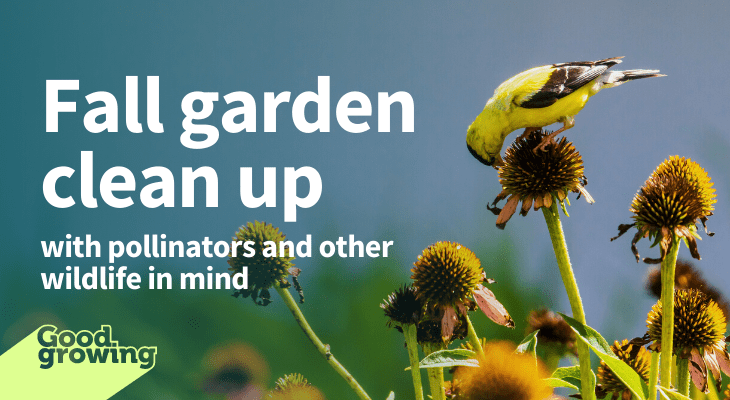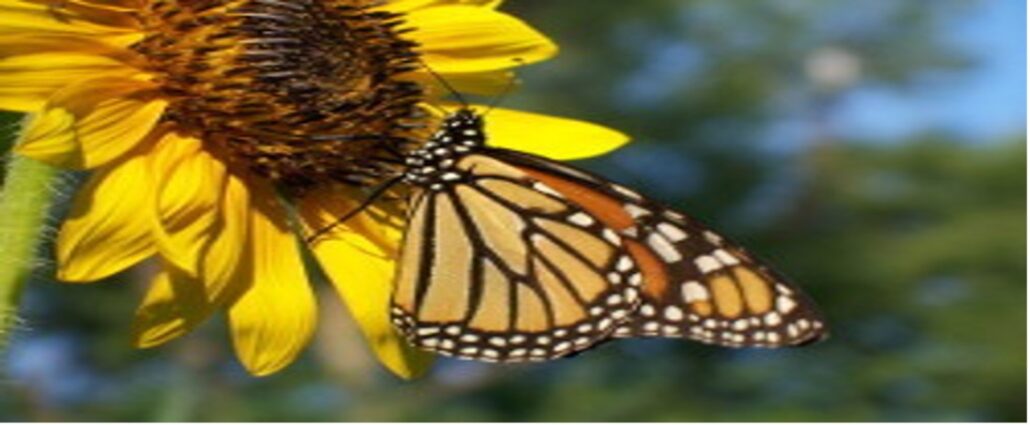By Barbara Heimlich, Editor
Sources: Smithsonian Gardens; The Connecticut Agricultural Experiment Station; Pollinator Partnership

Pollinators are in trouble, but you can help!
7 Things You Can Do for Pollinators

1. PLANT FOR POLLINATORS
- Habitat opportunities abound on every landscape – from window boxes to acres of farms to corporate campuses to utility and roadside corridors – every site can be habitat.
- Utilize plants native to your area (or at the least, non-invasive for your area).
- Utilize the Ecoregional Planting Guides, which will provide you with a free pollinator planting guide and the Garden Recipe Cards, which are regionally specific. Native Pollinator Garden Recipe Cards are designed with easy to follow guidelines for creating home pollinator gardens that provide diverse and colorful herbaceous floral displays, and resources across growing seasons. The recommendation for each of the plant species was determined through an extensive vetting process with native plant and pollinator authorities to ensure they meet the unique environmental characteristics and resource needs of pollinator species associated with each region.
- Know your soil type and select appropriate plant material. The Connecticut Agricultural Experiment Station had a free Soil Testing Laboratory in New Haven, 123 Huntington Street, New Haven.
- Plant in clusters to create a “target’ for pollinators to find.
- Plant for continuous bloom throughout the growing season from spring to fall.
- Select a site that is removed from wind, has at least partial sun, and can provide water.
- Allow material from dead branches and logs remain as nesting sites; reduce mulch to allow patches of bare ground for ground-nesting bees to utilize; consider installing wood nesting blocks for wood-nesting natives.

2. REDUCE OR ELIMINATE THE IMPACT OF PESTICIDES.
- Check out the Pesticides Learning Center on the Pollinator Partnership website to learn more about the interactions between pollinators and pesticides!
- Where possible, avoid pest problems in the first place by burying infested plant residues, removing pest habitat, and planting native plants that encourage natural enemies of pests.
- Practice Integrated Pest Management (IPM).
- If you must use pesticides, read and follow ALL label directions carefully.

3. BECOME A BEE FRIENDLY GARDEN MEMBER
- Join Bee Friendly Gardening to showcase your commitment to pollinator health! Connect with a network of gardeners all across North America and beyond.
- If you are a farmer or rancher there are other options for you. Check out the Bee Friendly Farming page to learn more.

4. REACH OUT TO OTHERS – INFORM AND INSPIRE
- Utilize all the materials available to help you tell the story of pollinators.
- Especially during National Pollinator Week (June 17-23, 2025).
- Tell local and state government officials that you care about pollinator health.

5. SUPPORT LOCAL BEES AND BEEKEEPERS.
- Buying local honey supports the beekeepers in your area.
- If you’re concerned about the number of chemicals used in agriculture, buy organic.
- If you’re concerned about contributions to global carbon emissions, buy local.

6. CONSERVE ALL OF OUR RESOURCES; USE LESS AND REDUCE YOUR IMPACT.
- Pollinators are dramatically affected by extremes in weather.
- Climate change puts pressure on native ranges and overwintering sites.

7. SUPPORT THE WORK OF GROUPS PROMOTING SCIENCE BASED, PRACTICAL EFFORTS FOR POLLINATORS.
Local nectar and pollen sources are key to supporting local pollinators. To maximize the use of your yard, consider planting flowers that bloom from early spring through late autumn, thus providing a place where early-season up through the last-season pollinators can “fuel up.” Remove invasive plants, such as burning bush, autumn olive, Japanese barberry, and others, in favor of native plant species. For example, planting wild geranium and highbush blueberry for the early season; swamp milkweed and New Jersey tea for the middle of the season; and New England aster and wrinkleleaf goldenrod for the late season will provide blooming flowers from spring through fall. With the right mix of plants, you can turn your property into a haven for the entire year!
Pollinators need places to nest, feed, and protect their offspring. By managing your property to be pollinator-friendly, you may be able to greatly improve pollinator habitat. Maintaining natural areas (unmanicured areas of your property) is key for long-term pollinator protection. If you have a forest, meadow, or wetland on your property, bees will use those areas extensively for both feeding and nesting. You can also give wild bees a helping hand by providing nesting sites. These sites could be patches of untilled, bare, well-drained soil, which is perfect for many ground-nesting bees. Sites for wood-nesting bees include old logs with beetle burrows (for mason bees and leafcutter bees), or brush piles (for safe places to hibernate). To encourage butterflies, you should plant the caterpillar host plants. For example, monarchs need milkweeds to feed on as caterpillars. New Jersey tea is eaten by many Connecticut insects, making it a great addition to a pollinator garden. Planting native food plants in your yard or garden is a great way to encourage pollinators to flourish!
No matter the life stage, these insects are best protected by avoiding disturbances to their chosen wintering sites. It is important to support these organisms across their entire life cycle, including over winter. For example, mated queen bumble bees spend the winter under leaf litter or soil. Lepidopterans may overwinter as eggs, caterpillars, pupae, or adults. Plant management or soil disturbance is best conducted during late summer or fall to minimize negative effects to pollinators over wintering periods. If possible, management should occur in such a way that much of the habitat is left undisturbed in any given year, helping to protect species from the direct impacts of disturbance.
Above all, any space created for pollinators should be pesticide free. Insecticides are especially harmful to pollinators if applied at the wrong time or application rate. While it may not always be possible to completely eliminate pesticides from your garden or yard, you can certainly reduce the impacts on pollinators with a simple few steps. Chemicals should not be applied when pollinators are active – most pollinators will be resting during the night. Similarly, if possible, pesticides should be applied to the parts of the plant without flowers so that pollinators are not exposed to chemicals while visiting the flowers.
Pollinators and the White House, 2014:
You are not alone in your interest in pollinator protection! In June 2014, President Barack Obama released a memorandum outlining his commitment to “honey bees, native bees, birds, bats, and butterflies.” He created a task force to develop and help implement recommendations for saving pollinator populations. President Obama highlighted the importance of these animals in our natural and agricultural systems, championing their cause from the highest office in the nation.
Who does the Pollinator Lawn help? Pollinators and Plants: A perfect match! Plants in a pollinator lawn have co-evolved with pollinators over many, many years to form perfect partnerships. Pollinators select flowers to feed on based on their shape, size, scent, and color. While going from one flower to another, pollinators carry pollen that fertilize the plants. A win-win combination!

- The clouded yellow butterfly (Colias croceus) has specialized mouth parts that enable it to reach inside self-heal’s (Prunella vulgaris) tubular flowers.

- The tiny sweat bee (Auguchlora pura) is attracted by the aroma of creeping thyme’s (Thymus serphyllum) small flowers.


- The endangered rusty patched bumble bee (Bombus affinis) is attracted to white flowers, like those of Dutch White Clover (Trifolium repens).

It’s time to think outside the lawn!

